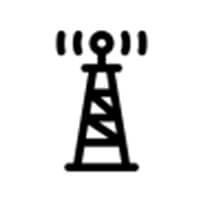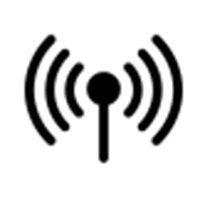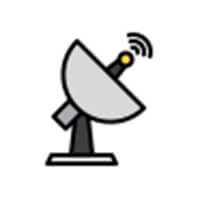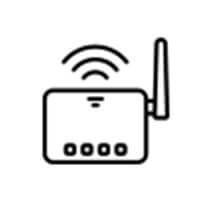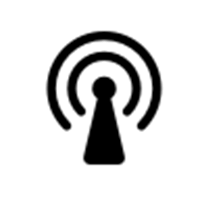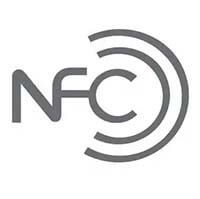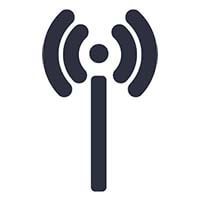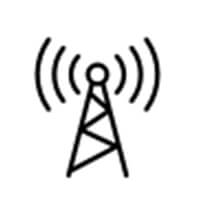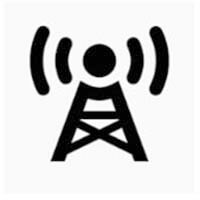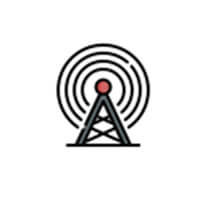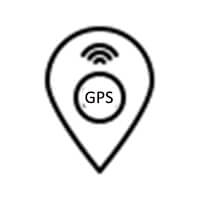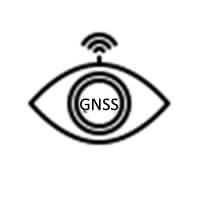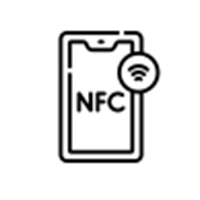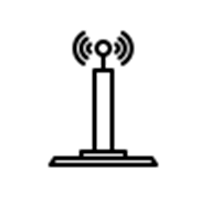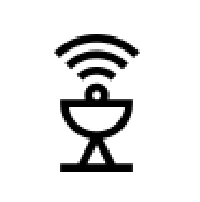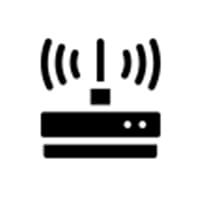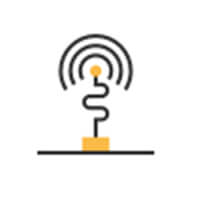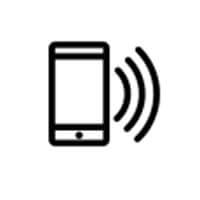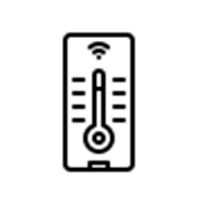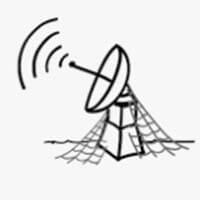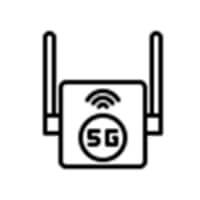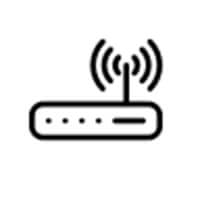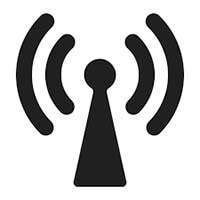RF Frequency Bands
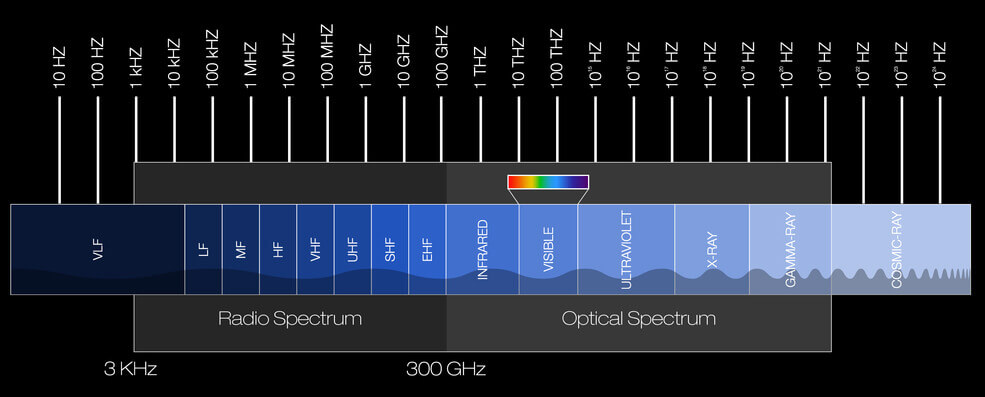
There Are Numerous Ways Frequency Bands Have Been Designated. Frequency Bands allocated to Terrestrial Broadcasting Services.
The International Telecommunications Union designates bands as listed in the table below.
Frequencies as designated by the International Telecommunications Union
3 Hz-30 Hz
Wavelength: 10^8m-10^7m
Band: Extremely low frequency (ELF)
30 Hz-300 Hz
Wavelength: 10^7m-10^6m
Band: Super low frequency (SLF)
300 Hz-3 kHz
Wavelength: 10^6m-10^5m
Band: Ultra-low frequency (ULF)
300 Hz-3 kHz
Wavelength: 10^6m-10^5m
Band: Ultra-low frequency (ULF)
There are also other approaches to designating frequency bands. During World War II, certain radar bands were given code words so engineers could talk about them without divulging their actual frequency. They were deliberately non-sequential.
After the war, the secrecy was lifted. The Institute of Electrical and Electronics Engineers (IEEE) has published a standard for the letter designation of radar-frequency bands. These codes are used by some engineers for radar, satellite, and terrestrial communications.
Institute of Electrical and Electronics Engineers (IEEE) Radar Band Designations
3-30 MHz
Wavelength: 100-10 m
Band: HF
30-300 MHz
Wavelength: 10–1 m
Band: VHF
300-1000 MHz
Wavelength: 100–30 cm
Band: ULF
1-2 GHz
Wavelength: 30–15 cm
Band: L
2-4 GHz
Wavelength: 30–15 cm
Band: S
4-8 GHz
Wavelength: 15–7.5 cm
Band: C
8-12 GHz
Wavelength: 7.5–3.75 cm
Band: X
12-18 GHz
Wavelength: 3.75–2.50 cm
Band: Ku
18-27 GHz
Wavelength: 1.67–1.11 cm
Band: K
27–40 GHz
Wavelength: 11.1–7.5 mm
Band: Ka
40-75 GHz
Wavelength: 7.5 mm-4 mm
Band: V
75-110 GHz
Wavelength: 4 mm-2.73 mm
Band: W
Bandwidth is the portion of the spectrum that a given telecommunications system can use. For example, a system that operates on frequencies between 150 and 200 MHz has a bandwidth of 50 megahertz.
An important distinction in spectrum technology is the difference between narrowband and broadband. Narrowband signals have a smaller bandwidth (kilohertz) and are used for limited services such as paging and low-speed data transmission.
Broadband signals have a large bandwidth (megahertz) and can support many advanced telecommunications services such as high-speed data and video transmission. The precise dividing line between broadband and narrowband is not always clear, and changes as technology evolve.
2.4GHz Wi-Fi Frequency Bands
List of WLAN (Wireless Local Area Network) channels using IEEE 802.11 protocols
802.11 b/g/n (2.4 GHz band)
| Channel | Frequency (MHz) | |||
|---|---|---|---|---|
| F - 10 | Center | F + 10 | Area | |
| 1 | 2402 | 2412 | 2422 | |
| 2 | 2407 | 2417 | 2427 | |
| 3 | 2412 | 2422 | 2432 | |
| 4 | 2417 | 2427 | 2437 | |
| 5 | 2422 | 2432 | 2442 | |
| 6 | 2427 | 2437 | 2447 | |
| 7 | 2432 | 2442 | 2452 | |
| 8 | 2437 | 2447 | 2457 | |
| 9 | 2442 | 2452 | 2462 | |
| 10 | 2447 | 2457 | 2467 | |
| 11 | 2452 | 2462 | 2472 | |
| 12 | 2457 | 2467 | 2477 | |
| 13 | 2462 | 2472 | 2482 | |
| 14 | 2474 | 2484 | 2494 | Japan |
Transmission can be on a 22MHz (802.11b), 20MHz (802.11g/n), or 40MHz (802.11n) wide channel
5GHz Wi-Fi Frequency Bands
802.11 a/n (5 GHz band)
| Channel | Frequency (MHz) | |||
|---|---|---|---|---|
| F - 10 | Center | F + 10 | Area | |
| 36 | 5170 | 5180 | 5190 | |
| 40 | 5190 | 5200 | 5210 | |
| 44 | 5210 | 5220 | 5230 | |
| 48 | 5230 | 5240 | 5250 | |
| 52 | 5250 | 5260 | 5270 | |
| 56 | 5270 | 5280 | 5290 | |
| 60 | 5290 | 5300 | 5310 | |
| 64 | 5310 | 5320 | 5330 | |
| 100 | 5490 | 5500 | 5510 | |
| 104 | 5510 | 5520 | 5530 | |
| 108 | 5530 | 5540 | 5550 | |
| 112 | 5550 | 5560 | 5570 | |
| 116 | 5570 | 5580 | 5590 | |
| 120 | 5590 | 5600 | 5610 | |
| 124 | 5610 | 5620 | 5630 | |
| 128 | 5630 | 5640 | 5650 | |
| 132 | 5650 | 5660 | 5670 | |
| 136 | 5670 | 5680 | 5690 | |
| 140 | 5690 | 5700 | 5710 | |
| 144 | 5710 | 5720 | 5730 | |
| 149 | 5735 | 5745 | 5755 | |
| 153 | 5755 | 5765 | 5775 | |
| 157 | 5775 | 5785 | 5795 | |
| 161 | 5795 | 5805 | 5815 | |
| 165 | 5815 | 5825 | 5835 |
Transmission can be on a 20 or 40MHz (802.11a/n), or 80 MHz (802.11ac) wide channel
CDMA-2000 Channel Frequency Bands
| Band | Name | Downlink (MHz) | Bandwidth | Uplink (MHz) | Duplex spacing | ||||
|---|---|---|---|---|---|---|---|---|---|
| Low | Middle | High | (MHz) | Low | Middle | High | (MHz) | ||
| 0 | 800 | 860 | 877 | 894 | 34 | 815 | 832 | 849 | 45 |
| 1 | 1900 PCS | 1930 | 1960 | 1990 | 60 | 1850 | 1880 | 1910 | 80 |
| 2 | TACS | 917 | 938.5 | 960 | 43 | 872 | 893.5 | 915 | 45 |
| 3 | JTACS | 832 | 851 | 870 | 38 | 887 | 906 | 925 | -55 |
| 4 | Korean PCS | 1840 | 1855 | 1870 | 30 | 1750 | 1765 | 1780 | 90 |
| 5 | 450 | 420 | 456.5 | 493 | 73 | 410 | 446.5 | 483 | 10 |
| 6 | 2 GHz | 2110 | 2140 | 2170 | 60 | 1920 | 1950 | 1980 | 190 |
| 7 | 700 Upper | 746 | 752 | 758 | 12 | 776 | 782 | 788 | -30 |
| 8 | 1800 | 1805 | 1842.5 | 1880 | 75 | 1710 | 1747.5 | 1785 | 95 |
| 9 | 900 | 925 | 942.5 | 960 | 35 | 880 | 897.5 | 915 | 45 |
| 10 | Sec 800 MHz | 851 | 895.5 | 940 | 89 | 806 | 853.5 | 901 | 45 |
| 11 | 400 MHz PAMR | 420 | 456.5 | 493 | 73 | 410 | 446.5 | 483 | 10 |
| 12 | 800 MHz PAMR | 915 | 918 | 921 | 6 | 870 | 873 | 876 | 45 |
| 13 | 2.5 GHz IMT-2000 Ext | 2620 | 2655 | 2690 | 70 | 2500 | 2535 | 2570 | 120 |
| 14 | US PCS 1.9 GHz | 1930 | 1962.5 | 1995 | 65 | 1850 | 1882.5 | 1915 | 80 |
| 15 | AWS | 2110 | 2132.5 | 2155 | 45 | 1710 | 1732.5 | 1755 | 400 |
| 16 | US 2.5 GHz | 2624 | 2657 | 2690 | 66 | 2502 | 2535 | 2568 | 122 |
| 18 | 700 PS | 757 | 763 | 769 | 12 | 787 | 793 | 799 | -30 |
| 19 | 700 Lower | 728 | 737 | 746 | 18 | 698 | 707 | 716 | 30 |
| 20 | 1600 L-Band | 1525 | 1542 | 1559 | 34 | 1626.5 | 1643.5 | 1660.5 | -101.5 |
| 21 | 2000 S-Band | 2180 | 2190 | 2200 | 20 | 2000 | 2010 | 2020 | 180 |
AWS: Advanced Wireless Services
JTACS: Japanese TACS
PAMR: Public Access Mobile Radio
PCS: Personal Communications Service
PS: Public Safety
Sec: Secondary
TACS: Total Access Communication System
GSM EDGE Frequency bands
| Band | Downlink (MHz) | Bandwidth | Uplink (MHz) | Chanel number | Duplex spacing | ||||
|---|---|---|---|---|---|---|---|---|---|
| Low | Middle | High | (MHz) | Low | Middle | High | Arfcn | (MHz) | |
| 380 T-GSM | 390.2 | 395 | 399.8 | 9.6 | 380.2 | 385 | 389.8 | Dynamic | 10 |
| 410 T-GSM | 420.2 | 425 | 429.8 | 9.6 | 410.2 | 415 | 419.8 | Dynamic | 10 |
| 450 | 460.6 | 464 | 467.4 | 6.8 | 450.6 | 454 | 457.4 | 259 - 293 | 10 |
| 480 | 489 | 492.4 | 495.8 | 6.8 | 479 | 482.4 | 485.8 | 306 - 340 | 10 |
| 710 | 728.2 | 737.2 | 746.2 | 18 | 698.2 | 707.2 | 716.2 | Dynamic | 30 |
| 750 | 747.2 | 755.2 | 763.2 | 16 | 777.2 | 785.2 | 793.2 | Dynamic | -30 |
| 810 T-GSM | 851.2 | 858.7 | 866.2 | 15 | 806.2 | 813.7 | 821.2 | Dynamic | 45 |
| 850 | 869.2 | 881.5 | 893.8 | 24.6 | 824.2 | 836.5 | 848.8 | 128 - 251 | 45 |
| 900 P | 935.2 | 947.5 | 959.8 | 24.6 | 890.2 | 902.5 | 914.8 | 1 - 124 | 45 |
| 900 E | 925.2 | 942.5 | 959.8 | 34.6 | 880.2 | 897.5 | 914.8 | 0 - 124 975 - 1023 | 45 |
| 900 R | 921.2 | 940.5 | 959.8 | 38.6 | 876.2 | 895.5 | 914.8 | 0 - 124 955 - 1023 | 45 |
| 900 ER | 918.2 | 939 | 959.8 | 41.6 | 873.2 | 894 | 914.8 | 0 - 124 940 - 1023 | 45 |
| 1800 DCS | 1805.2 | 1842.5 | 1879.8 | 74.6 | 1710.2 | 1747.5 | 1784.8 | 512 - 885 | 95 |
| 1900 PCS | 1930.2 | 1960 | 1989.8 | 59.6 | 1850.2 | 1880 | 1909.8 | 512 - 810 | 80 |
ITU Bands
As a matter of convention, the ITU divides the radio spectrum into 12 bands, each beginning at a wavelength which is a power of ten (10n) meters, with a corresponding frequency of 3×108−n hertz, and each covering a decade of frequency or wavelength.
Each of these bands has a traditional name. For example, the term high frequency (HF) designates the wavelength range from 100 to 10 meters, corresponding to a frequency range of 3 MHz to 30 MHz. This is just a naming convention and is not related to allocation;
The ITU further divides each band into subbands allocated to different uses. Above 300 GHz, the absorption of electromagnetic radiation by Earth’s atmosphere is so great that the atmosphere is effectively opaque until it becomes transparent again in the near-infrared and optical window frequency ranges.
The table originated with a recommendation of the IVth CCIR meeting, held in Bucharest in 1937, and was approved by the International Radio Conference held at Atlantic City, NJ in 1947.
ITU Frequency Bands Chart
| Band name | Abbreviation | ITU band number | Frequency and Wavelength | Example Uses |
|---|---|---|---|---|
| Extremely low frequency | ELF | 1 | 3–30 Hz 100,000–10,000 km | Communication with submarines |
| Super low frequency | SLF | 2 | 30–300 Hz 10,000–1,000 km | Communication with submarines |
| Ultra low frequency | ULF | 3 | 300–3,000 Hz 1,000–100 km | Submarine communication, communication within mines |
| Very low frequency | VLF | 4 | 3–30 kHz 100–10 km | Navigation, time signals, submarine communication, wireless heart rate monitors, geophysics |
| Low frequency | LF | 5 | 30–300 kHz 10–1 km | Navigation, time signals, AM longwave broadcasting (Europe and parts of Asia), RFID, amateur radio |
| Medium frequency | MF | 6 | 300–3,000 kHz 1,000–100 m | AM (medium-wave) broadcasts, amateur radio, avalanche beacons |
| High frequency | HF | 7 | 3–30 MHz 100–10 m | Shortwave broadcasts, citizens band radio, amateur radio and over-the-horizon aviation communications, RFID, over-the-horizon radar, automatic link establishment (ALE) / near-vertical incidence skywave (NVIS) radio communications, marine and mobile radio telephony |
| Very high frequency | VHF | 8 | 30–300 MHz 10–1 m | FM, television broadcasts, line-of-sight ground-to-aircraft and aircraft-to-aircraft communications, land mobile and maritime mobile communications, amateur radio, weather radio |
| Ultra high frequency | UHF | 9 | 300–3,000 MHz 1–0.1 m | Television broadcasts, microwave oven, microwave devices/communications, radio astronomy, mobile phones, wireless LAN, Bluetooth, ZigBee, GPS and two-way radios such as land mobile, FRS and GMRS radios, amateur radio, satellite radio, Remote control Systems, ADSB |
| Super high frequency | SHF | 10 | 3–30 GHz 100–10 mm | Radio astronomy, microwave devices/communications, wireless LAN, DSRC, most modern radars, communications satellites, cable and satellite television broadcasting, DBS, amateur radio, satellite radio |
| Extremely high frequency | EHF | 11 | 30–300 GHz 10–1 mm | Radio astronomy, high-frequency microwave radio relay, microwave remote sensing, amateur radio, directed-energy weapon, millimeter wave scanner, wireless LAN (802.11ad) |
| Terahertz or Tremendously high frequency | THz or THF | 12 | 300–3,000 GHz 1–0.1 mm | Experimental medical imaging to replace X-rays, ultrafast molecular dynamics, condensed-matter physics, terahertz time-domain spectroscopy, terahertz computing/communications, remote sensing |
LTE Frequency Bands
The frequency bands allocated for LTE are different in different countries around the world.
There are two types of LTE Frequency Bands FDD and TDD. FDD stands for Frequency Division Duplex, each FDD-LTE bands consist of a pair of frequencies, one for the uplink and another for the downlink.
TDD (Time Division Duplex) LTE Bands require only a single band which is used for both the uplink and downlink.
FDD LTE Frequency Bands
| LTE Band Number | Uplink Band (MHz) | Downlink Band (MHz) | Band Width (MHz) | Duplex Spacing (MHz) | Band Gap (MHz) | Remarks |
|---|---|---|---|---|---|---|
| LTE Band 1 | 1920 - 1980 | 2110 - 2170 | 60 MHz | 190 MHz | 130 MHz | LTE Band 1 is a part of the FDD (Frequency Division Duplex) LTE spectrum that has different uplink and downlink frequencies. The separate uplink and downlink bands allow for simultaneous transmission on two frequencies. The bands have a separation between them which is called the band gap. |
| LTE Band 2 | 1850 - 1910 | 1930 - 1990 | 60 MHz | 80 MHz | 20 MHz | LTE Band 2 is a part of the FDD (Frequency Division Duplex) LTE spectrum that has different uplink and downlink frequencies. The separate uplink and downlink bands allow for simultaneous transmission on two frequencies. The bands have a separation between them which is called the band gap. |
| LTE Band 3 | 1710 - 1785 | 1805 - 1880 | 75 MHz | 95 MHz | 20 MHz | LTE Band 3 is a part of the FDD (Frequency Division Duplex) LTE spectrum that has different uplink and downlink frequencies. The separate uplink and downlink bands allow for simultaneous transmission on two frequencies. The bands have a separation between them which is called the band gap. |
| LTE Band 4 | 1710 - 1755 | 2110 - 2155 | 45 MHz | 400 MHz | 355 MHz | LTE Band 4 is a part of the FDD (Frequency Division Duplex) LTE spectrum that has different uplink and downlink frequencies. The separate uplink and downlink bands allow for simultaneous transmission on two frequencies. The bands have a separation between them which is called the band gap. |
| LTE Band 5 | 824 - 849 | 869 - 894 | 25 MHz | 45 MHz | 20 MHz | LTE Band 5 is a part of the FDD (Frequency Division Duplex) LTE spectrum that has different uplink and downlink frequencies. The separate uplink and downlink bands allow for simultaneous transmission on two frequencies. The bands have a separation between them which is called the band gap. |
| LTE Band 6 | 830 - 840 | 875 - 885 | 10 MHz | 35 MHz | 25 MHz | LTE Band 6 is a part of the FDD (Frequency Division Duplex) LTE spectrum that has different uplink and downlink frequencies. The separate uplink and downlink bands allow for simultaneous transmission on two frequencies. The bands have a separation between them which is called the band gap. |
| LTE Band 7 | 2500 - 2570 | 2620 - 2690 | 70 MHz | 120 MHz | 50 MHz | LTE Band 7 is a part of the FDD (Frequency Division Duplex) LTE spectrum that has different uplink and downlink frequencies. The separate uplink and downlink bands allow for simultaneous transmission on two frequencies. The bands have a separation between them which is called the band gap. |
| LTE Band 8 | 880 - 915 | 925 - 960 | 35 MHz | 45 MHz | 10 MHz | LTE Band 8 is a part of the FDD (Frequency Division Duplex) LTE spectrum that has different uplink and downlink frequencies. The separate uplink and downlink bands allow for simultaneous transmission on two frequencies. The bands have a separation between them which is called the band gap. |
| LTE Band 9 | 1749.9 - 1784.9 | 1844.9 - 1879.9 | 35 MHz | 95 MHz | 60 MHz | LTE Band 9 is a part of the FDD (Frequency Division Duplex) LTE spectrum that has different uplink and downlink frequencies. The separate uplink and downlink bands allow for simultaneous transmission on two frequencies. The bands have a separation between them which is called the band gap. |
| LTE Band 10 | 1710 - 1770 | 2110 - 2170 | 60 MHz | 400 MHz | 340 MHz | LTE Band 10 is a part of the FDD (Frequency Division Duplex) LTE spectrum that has different uplink and downlink frequencies. The separate uplink and downlink bands allow for simultaneous transmission on two frequencies. The bands have a separation between them which is called the band gap. |
| LTE Band 11 | 1427.9 - 1452.9 | 1475.9 - 1500.9 | 20 MHz | 48 MHz | 28 MHz | LTE Band 11 is a part of the FDD (Frequency Division Duplex) LTE spectrum that has different uplink and downlink frequencies. The separate uplink and downlink bands allow for simultaneous transmission on two frequencies. The bands have a separation between them which is called the band gap. |
| LTE Band 12 | 698 - 716 | 728 - 746 | 18 MHz | 30 MHz | 12 MHz | LTE Band 12 is a part of the FDD (Frequency Division Duplex) LTE spectrum that has different uplink and downlink frequencies. The separate uplink and downlink bands allow for simultaneous transmission on two frequencies. The bands have a separation between them which is called the band gap. |
| LTE Band 13 | 777 - 787 | 746 - 756 | 10 MHz | -31 MHz | 41 MHz | LTE Band 13 is a part of the FDD (Frequency Division Duplex) LTE spectrum that has different uplink and downlink frequencies. The separate uplink and downlink bands allow for simultaneous transmission on two frequencies. The bands have a separation between them which is called the band gap. |
| LTE Band 14 | 788 - 798 | 758 - 768 | 10 MHz | -30 MHz | 40 MHz | LTE Band 14 is a part of the FDD (Frequency Division Duplex) LTE spectrum that has different uplink and downlink frequencies. The separate uplink and downlink bands allow for simultaneous transmission on two frequencies. The bands have a separation between them which is called the band gap. |
| LTE Band 15 | 1900 - 1920 | 2600 - 2620 | 20 MHz | 700 MHz | 680 MHz | LTE Band 15 is a part of the FDD (Frequency Division Duplex) LTE spectrum that has different uplink and downlink frequencies. The separate uplink and downlink bands allow for simultaneous transmission on two frequencies. The bands have a separation between them which is called the band gap. |
| LTE Band 16 | 2010 - 2025 | 2585 - 2600 | 15 MHz | 575 MHz | 560 MHz | LTE Band 16 is a part of the FDD (Frequency Division Duplex) LTE spectrum that has different uplink and downlink frequencies. The separate uplink and downlink bands allow for simultaneous transmission on two frequencies. The bands have a separation between them which is called the band gap. |
| LTE Band 17 | 704 - 716 | 734 - 746 | 12 MHz | 30 MHz | 18 MHz | LTE Band 17 is a part of the FDD (Frequency Division Duplex) LTE spectrum that has different uplink and downlink frequencies. The separate uplink and downlink bands allow for simultaneous transmission on two frequencies. The bands have a separation between them which is called the band gap. |
| LTE Band 18 | 815 - 830 | 860 - 875 | 15 MHz | 45 MHz | 30 MHz | LTE Band 18 is a part of the FDD (Frequency Division Duplex) LTE spectrum that has different uplink and downlink frequencies. The separate uplink and downlink bands allow for simultaneous transmission on two frequencies. The bands have a separation between them which is called the band gap. |
| LTE Band 19 | 830 - 845 | 875 - 890 | 15 MHz | 45 MHz | 30 MHz | LTE Band 19 is a part of the FDD (Frequency Division Duplex) LTE spectrum that has different uplink and downlink frequencies. The separate uplink and downlink bands allow for simultaneous transmission on two frequencies. The bands have a separation between them which is called the band gap. |
| LTE Band 20 | 832 - 862 | 791 - 821 | 30 MHz | -41 MHz | 71 MHz | LTE Band 20 is a part of the FDD (Frequency Division Duplex) LTE spectrum that has different uplink and downlink frequencies. The separate uplink and downlink bands allow for simultaneous transmission on two frequencies. The bands have a separation between them which is called the band gap. |
| LTE Band 21 | 1447.9 - 1462.9 | 1495.5 - 1510.9 | 15 MHz | 48 MHz | 33 MHz | LTE Band 21 is a part of the FDD (Frequency Division Duplex) LTE spectrum that has different uplink and downlink frequencies. The separate uplink and downlink bands allow for simultaneous transmission on two frequencies. The bands have a separation between them which is called the band gap. |
| LTE Band 22 | 3410 - 3500 | 3510 - 3600 | 90 MHz | 100 MHz | 10 MHz MHz | LTE Band 22 is a part of the FDD (Frequency Division Duplex) LTE spectrum that has different uplink and downlink frequencies. The separate uplink and downlink bands allow for simultaneous transmission on two frequencies. The bands have a separation between them which is called the band gap. |
| LTE Band 23 | 2000 - 2020 | 2180 - 2200 | 20 MHz | 180 MHz | 160 MHz | LTE Band 23 is a part of the FDD (Frequency Division Duplex) LTE spectrum that has different uplink and downlink frequencies. The separate uplink and downlink bands allow for simultaneous transmission on two frequencies. The bands have a separation between them which is called the band gap. |
| LTE Band 24 | 1625.5 - 1660.5 | 1525 - 1559 | 34 MHz | -101.5 MHz | 135.5 MHz | LTE Band 24 is a part of the FDD (Frequency Division Duplex) LTE spectrum that has different uplink and downlink frequencies. The separate uplink and downlink bands allow for simultaneous transmission on two frequencies. The bands have a separation between them which is called the band gap. |
| LTE Band 25 | 1850 - 1915 | 1930 - 1995 | 65 MHz | 80 MHz | 15 MHz | LTE Band 25 is a part of the FDD (Frequency Division Duplex) LTE spectrum that has different uplink and downlink frequencies. The separate uplink and downlink bands allow for simultaneous transmission on two frequencies. The bands have a separation between them which is called the band gap. |
| LTE Band 26 | 814 - 849 | 859 - 894 | 30 / 40 MHz | 10 MHz | LTE Band 26 is a part of the FDD (Frequency Division Duplex) LTE spectrum that has different uplink and downlink frequencies. The separate uplink and downlink bands allow for simultaneous transmission on two frequencies. The bands have a separation between them which is called the band gap. | |
| LTE Band 27 | 807 - 824 | 852 - 869 | 17 MHz | 45 MHz | 28 MHz | LTE Band 27 is a part of the FDD (Frequency Division Duplex) LTE spectrum that has different uplink and downlink frequencies. The separate uplink and downlink bands allow for simultaneous transmission on two frequencies. The bands have a separation between them which is called the band gap. |
| LTE Band 28 | 703 - 748 | 758 - 803 | 45 MHz | 55 MHz | 10 MHz | LTE Band 28 is a part of the FDD (Frequency Division Duplex) LTE spectrum that has different uplink and downlink frequencies. The separate uplink and downlink bands allow for simultaneous transmission on two frequencies. The bands have a separation between them which is called the band gap. |
| LTE Band 29 | n/a | 717 -728 | 11 MHz | LTE Band 29 is a part of the FDD (Frequency Division Duplex) LTE spectrum that has different uplink and downlink frequencies. The separate uplink and downlink bands allow for simultaneous transmission on two frequencies. The bands have a separation between them which is called the band gap. | ||
| LTE Band 30 | 2305 - 2315 | 2350 - 2360 | 10 MHz | 45 MHz | 35 MHz | LTE Band 30 is a part of the FDD (Frequency Division Duplex) LTE spectrum that has different uplink and downlink frequencies. The separate uplink and downlink bands allow for simultaneous transmission on two frequencies. The bands have a separation between them which is called the band gap. |
| LTE Band 31 | 452.5 - 457.5 | 462.5 - 467.5 | 5 MHz | 10 MHz | 5 MHz | LTE Band 31 is a part of the FDD (Frequency Division Duplex) LTE spectrum that has different uplink and downlink frequencies. The separate uplink and downlink bands allow for simultaneous transmission on two frequencies. The bands have a separation between them which is called the band gap. |
TDD LTE Frequency Bands
| LTE Band Number | Frequency | Bandwidth (MHz) | Remarks |
|---|---|---|---|
| LTE Band 33 | 1900 - 1920 MHz | 20 MHz | LTE Band 33 is a part of the TDD (Time Division Duplex) LTE spectrum that requires only a single frequency band for both the uplink and downlink. LTE Band 33 has a frequency range from 1900 - 1920 MHz with a bandwidth of 20 MHz. |
| LTE Band 34 | 2010 - 2025 MHz | 15 MHz | LTE Band 34 is a part of the TDD (Time Division Duplex) LTE spectrum that requires only a single frequency band for both the uplink and downlink. LTE Band 34 has a frequency range from 2010 - 2025 MHz with a bandwidth of 15 MHz. |
| LTE Band 35 | 1850 - 1910 MHz | 60 MHz | LTE Band 35 is a part of the TDD (Time Division Duplex) LTE spectrum that requires only a single frequency band for both the uplink and downlink. LTE Band 35 has a frequency range from 1850 - 1910 MHz with a bandwidth of 60 MHz. |
| LTE Band 36 | 1930 - 1990 MHz | 60 MHz | LTE Band 36 is a part of the TDD (Time Division Duplex) LTE spectrum that requires only a single frequency band for both the uplink and downlink. LTE Band 36 has a frequency range from 1930 - 1990 MHz with a bandwidth of 60 MHz. |
| LTE Band 37 | 1910 - 1930 MHz | 20 MHz | LTE Band 37 is a part of the TDD (Time Division Duplex) LTE spectrum that requires only a single frequency band for both the uplink and downlink. LTE Band 37 has a frequency range from 1910 – 1930 MHz with a bandwidth of 20 MHz. |
| LTE Band 38 | 2570 - 2620 MHz | 50 MHz | LTE Band 38 is a part of the TDD (Time Division Duplex) LTE spectrum that requires only a single frequency band for both the uplink and downlink. LTE Band 38 has a frequency range from 2570 - 2620 MHz with a bandwidth of 50 MHz. |
| LTE Band 39 | 1880 - 1920 MHz | 40 MHz | LTE Band 39 is a part of the TDD (Time Division Duplex) LTE spectrum that requires only a single frequency band for both the uplink and downlink. LTE Band 39 has a frequency range from 1880 - 1920 MHz with a bandwidth of 40 MHz. |
| LTE Band 40 | 2300 - 2400 MHz | 100 MHz | LTE Band 40 is a part of the TDD (Time Division Duplex) LTE spectrum that requires only a single frequency band for both the uplink and downlink. LTE Band 40 has a frequency range from 2300 - 2400 MHz with a bandwidth of 100 MHz. |
| LTE Band 41 | 2496 - 2690 MHz | 194 MHz | LTE Band 41 is a part of the TDD (Time Division Duplex) LTE spectrum that requires only a single frequency band for both the uplink and downlink. LTE Band 41 has a frequency range from 2496 - 2690 MHz with a bandwidth of 194 MHz. |
| LTE Band 42 | 3400 - 3600 MHz | 200 MHz | LTE Band 42 is a part of the TDD (Time Division Duplex) LTE spectrum that requires only a single frequency band for both the uplink and downlink. LTE Band 42 has a frequency range from 3400 - 3600 MHz with a bandwidth of 200 MHz. |
| LTE Band 43 | 3600 - 3800 MHz | 200 MHz | LTE Band 43 is a part of the TDD (Time Division Duplex) LTE spectrum that requires only a single frequency band for both the uplink and downlink. LTE Band 43 has a frequency range from 3600 - 3800 MHz with a bandwidth of 200 MHz. |
| LTE Band 44 | 703 - 803 MHz | 100 MHz | LTE Band 44 is a part of the TDD (Time Division Duplex) LTE spectrum that requires only a single frequency band for both the uplink and downlink. LTE Band 44 has a frequency range from 703 - 803 MHz with a bandwidth of 100 MHz. |
Industrial, scientific, medical(ISM) bands
The ISM bands are defined by the ITU Radio Regulations (article 5) in footnotes 5.138, 5.150, and 5.280 of the Radio Regulations. Individual countries’ use of the bands designated in these sections may differ due to variations in national radio regulations.
Because communication devices using the ISM bands must tolerate any interference from ISM equipment, unlicensed operations are typically permitted to use these bands, since unlicensed operation typically needs to be tolerant of interference from other devices anyway.
The ISM bands share allocations with unlicensed and licensed operations; however, due to the high likelihood of harmful interference, licensed use of the bands is typically low.
In the United States, uses of the ISM bands are governed by Part 18 of the Federal Communications Commission (FCC) rules, while Part 15 contains the rules for unlicensed communication devices, even those that share ISM frequencies.
In Europe, the ETSI is responsible for regulating the use of Short Range Devices, some of which operate in ISM bands.
The ISM bands were initially reserved for non-communications uses of RF energy, such as microwave ovens, radio-frequency heating, and similar purposes. However, in recent years the largest use of these bands has been by short-range low-power communications systems since users do not have to hold a radio operator’s license.
Cordless telephones, wireless computer networks, Bluetooth devices, and garage door openers all use the ISM bands. ISM devices do not have regulatory protection against interference from other users of the band.
| Frequency range | Center frequency | Bandwidth | Type | Availability | Licensed users | |
|---|---|---|---|---|---|---|
| 6.765 MHz | 6.795 MHz | 6.78 MHz | 30 kHz | A | Subject to local acceptance | FIXED SERVICE & Mobile Service |
| 13.553 MHz | 13.567 MHz | 13.56 MHz | 14 kHz | B | Worldwide | FIXED & Mobile services except Aeronautical mobile (R) service |
| 26.957 MHz | 27.283 MHz | 27.12 MHz | 326 kHz | B | Worldwide | FIXED & MOBILE SERVICE except Aeronautical mobile service, CB Radio |
| 40.66 MHz | 40.7 MHz | 40.68 MHz | 40 kHz | B | Worldwide | Fixed, Mobile services & Earth exploration-satellite service |
| 433.05 MHz | 434.79 MHz | 433.92 MHz | 1.74 MHz | A | only in Region 1, subject to local acceptance | AMATEUR SERVICE & RADIOLOCATION SERVICE, additional apply the provisions of footnote 5.280. For Australia see footnote AU. |
| 902 MHz | 928 MHz | 915 MHz | 26 MHz | B | Region 2 only (with some exceptions) | FIXED, Mobile except aeronautical mobile & Radiolocation service; in Region 2 additional Amateur service |
| 2.4 GHz | 2.5 GHz | 2.45 GHz | 100 MHz | B | Worldwide | FIXED, MOBILE, RADIOLOCATION, Amateur & Amateur-satellite service |
| 5.725 GHz | 5.875 GHz | 5.8 GHz | 150 MHz | B | Worldwide | FIXED-SATELLITE, RADIOLOCATION, MOBILE, Amateur & Amateur-satellite service |
| 24 GHz | 24.25 GHz | 24.125 GHz | 250 MHz | B | Worldwide | AMATEUR, AMATEUR-SATELLITE, RADIOLOCATION & Earth exploration-satellite service (active) |
| 61 GHz | 61.5 GHz | 61.25 GHz | 500 MHz | A | Subject to local acceptance | FIXED, INTER-SATELLITE, MOBILE & RADIOLOCATION SERVICE |
| 122 GHz | 123 GHz | 122.5 GHz | 1 GHz | A | Subject to local acceptance | EARTH EXPLORATION-SATELLITE (passive), FIXED, INTER-SATELLITE, MOBILE, SPACE RESEARCH (passive) & Amateur service |
| 244 GHz | 246 GHz | 245 GHz | 2 GHz | A | Subject to local acceptance | RADIOLOCATION, RADIO ASTRONOMY, Amateur & Amateur-satellite service |
5G NR Frequency Bands for FR1
| All bands | |||||||||||||||||||||||||||||
|---|---|---|---|---|---|---|---|---|---|---|---|---|---|---|---|---|---|---|---|---|---|---|---|---|---|---|---|---|---|
| Band | Name | Mode | ΔFRaster | Nref | Downlink (MHz) | Bandwidth | Uplink (MHz) | Duplex | Geographical | 3GPP | SCS | Channel bandwidth (MHz) | Note | ||||||||||||||||
| (kHz) | step | Low | Middle | High | DL/UL | Low | Middle | High | spacing | area | release | (kHz) | |||||||||||||||||
| size | nr-arfcn | (MHz) | nr-arfcn | (MHz) | 5 | 10 | 15 | 20 | 25 | 30 | 40 | 50 | 60 | 70 | 80 | 90 | 100 | ||||||||||||
| n1 | 2100 | FDD | 100 | 20 | 2110 | 2140 | 2170 | 60 | 1920 | 1950 | 1980 | 190 | Global | 15 | 15 | 5 | 10 | 15 | 20 | 25 | 30 | 40 | 50 | 1 | |||||
| 422000 | 428000 | 434000 | 384000 | 390000 | 396000 | 30 | 10 | 15 | 20 | 25 | 30 | 40 | 50 | ||||||||||||||||
| 60 | 10 | 15 | 20 | 25 | 30 | 40 | 50 | ||||||||||||||||||||||
| n2 | 1900 PCS | FDD | 100 | 20 | 1930 | 1960 | 1990 | 60 | 1850 | 1880 | 1910 | 80 | NAR | 15 | 15 | 5 | 10 | 15 | 20 | ||||||||||
| 386000 | 392000 | 398000 | 370000 | 376000 | 382000 | 30 | 10 | 15 | 20 | ||||||||||||||||||||
| 60 | 10 | 15 | 20 | ||||||||||||||||||||||||||
| n3 | 1800 | FDD | 100 | 20 | 1805 | 1842.5 | 1880 | 75 | 1710 | 1747.5 | 1785 | 95 | Global | 15 | 15 | 5 | 10 | 15 | 20 | 25 | 30 | 40 | |||||||
| 361000 | 368500 | 376000 | 342000 | 349500 | 357000 | 30 | 10 | 15 | 20 | 25 | 30 | 40 | |||||||||||||||||
| 60 | 10 | 15 | 20 | 25 | 30 | 40 | |||||||||||||||||||||||
| n5 | 850 | FDD | 100 | 20 | 869 | 881.5 | 894 | 25 | 824 | 836.5 | 849 | 45 | Global | 15 | 15 | 5 | 10 | 15 | 20 | ||||||||||
| 173800 | 176300 | 178800 | 164800 | 167300 | 169800 | 30 | 10 | 15 | 20 | ||||||||||||||||||||
| 60 | |||||||||||||||||||||||||||||
| n7 | 2600 | FDD | 100 | 20 | 2620 | 2655 | 2690 | 70 | 2500 | 2535 | 2570 | 120 | EMEA | 15 | 15 | 5 | 10 | 15 | 20 | 25 | 30 | 40 | 50 | 1 | |||||
| 524000 | 531000 | 538000 | 500000 | 507000 | 514000 | 30 | 10 | 15 | 20 | 25 | 30 | 40 | 50 | ||||||||||||||||
| 60 | 10 | 15 | 20 | 25 | 30 | 40 | 50 | ||||||||||||||||||||||
| n8 | 900 | FDD | 100 | 20 | 925 | 942.5 | 960 | 35 | 880 | 897.5 | 915 | 45 | Global | 15 | 15 | 5 | 10 | 15 | 20 | ||||||||||
| 185000 | 188500 | 192000 | 176000 | 179500 | 183000 | 30 | 10 | 15 | 20 | ||||||||||||||||||||
| 60 | |||||||||||||||||||||||||||||
| n12 | 700 a | FDD | 100 | 20 | 729 | 737.5 | 746 | 17 | 699 | 707.5 | 716 | 30 | NAR | 15.2 | 15 | 5 | 10 | 15 | |||||||||||
| 145800 | 147500 | 149200 | 139800 | 141500 | 143200 | 30 | 10 | 15 | |||||||||||||||||||||
| 60 | |||||||||||||||||||||||||||||
| n14 | 700 PS | FDD | 100 | 20 | 758 | 763 | 768 | 10 | 788 | 793 | 798 | -30 | NAR | 16 | 15 | 5 | 10 | ||||||||||||
| 151600 | 152600 | 153600 | 157600 | 158600 | 159600 | 30 | 10 | ||||||||||||||||||||||
| 60 | |||||||||||||||||||||||||||||
| n18 | 800 Lower | FDD | 100 | 20 | 860 | 867.5 | 875 | 15 | 815 | 822.5 | 830 | 45 | Japan | 16 | 15 | 5 | 10 | 15 | |||||||||||
| 172000 | 173500 | 175000 | 163000 | 164500 | 166000 | 30 | 10 | 15 | |||||||||||||||||||||
| 60 | |||||||||||||||||||||||||||||
| n20 | 800 | FDD | 100 | 20 | 791 | 806 | 821 | 30 | 832 | 847 | 862 | -41 | EMEA | 15 | 15 | 5 | 10 | 15 | 20 | ||||||||||
| 158200 | 161200 | 164200 | 166400 | 169400 | 172400 | 30 | 10 | 15 | 20 | ||||||||||||||||||||
| 60 | |||||||||||||||||||||||||||||
| n25 | 1900+ | FDD | 100 | 20 | 1930 | 1962.5 | 1995 | 65 | 1850 | 1882.5 | 1915 | 80 | NAR | 15.2 | 15 | 5 | 10 | 15 | 20 | 25 | 30 | 40 | 1 | ||||||
| 386000 | 392500 | 399000 | 370000 | 376500 | 383000 | 30 | 10 | 15 | 20 | 25 | 30 | 40 | |||||||||||||||||
| 60 | 10 | 15 | 20 | 25 | 30 | 40 | |||||||||||||||||||||||
| n26 | 850+ | FDD | 100 | 20 | 859 | 876.5 | 894 | 35 | 814 | 831.5 | 849 | 45 | NAR | 16.3 | 15 | 5 | 10 | 15 | 20 | ||||||||||
| 171800 | 175300 | 178800 | 162800 | 166300 | 169800 | 30 | 10 | 15 | 20 | ||||||||||||||||||||
| 60 | |||||||||||||||||||||||||||||
| n28 | 700 APT | FDD | 100 | 20 | 758 | 780.5 | 803 | 45 | 703 | 725.5 | 748 | 55 | APAC,EU | 15 | 15 | 5 | 10 | 15 | 20 | 30 | 40 | 1 | |||||||
| 151600 | 156100 | 160600 | 140600 | 145100 | 149600 | 30 | 10 | 15 | 20 | 30 | 40 | ||||||||||||||||||
| 60 | |||||||||||||||||||||||||||||
| n29 | 700 d | SDL | 100 | 20 | 717 | 722.5 | 728 | 11 | NAR | 16.1 | 15 | 5 | 10 | ||||||||||||||||
| 143400 | 144500 | 145600 | 30 | 10 | |||||||||||||||||||||||||
| 60 | |||||||||||||||||||||||||||||
| n30 | 2300 WCS | FDD | 100 | 20 | 2350 | 2355 | 2360 | 10 | 2305 | 2310 | 2315 | 45 | NAR | 16 | 15 | 5 | 10 | ||||||||||||
| 470000 | 471000 | 472000 | 461000 | 462000 | 463000 | 30 | 10 | ||||||||||||||||||||||
| 60 | |||||||||||||||||||||||||||||
| n34 | TD 2000 | TDD | 100 | 20 | 2010 | 2017.5 | 2025 | 15 | EMEA | 15.2 | 15 | 5 | 10 | 15 | |||||||||||||||
| 402000 | 403500 | 405000 | 30 | 10 | 15 | ||||||||||||||||||||||||
| 60 | 10 | 15 | |||||||||||||||||||||||||||
| n38 | TD 2600 | TDD | 100 | 20 | 2570 | 2595 | 2620 | 50 | EMEA | 15 | 15 | 5 | 10 | 15 | 20 | 25 | 30 | 40 | 1 | ||||||||||
| 514000 | 519000 | 524000 | 30 | 10 | 15 | 20 | 25 | 30 | 40 | ||||||||||||||||||||
| 60 | 10 | 15 | 20 | 25 | 30 | 40 | |||||||||||||||||||||||
| n39 | TD 1900+ | TDD | 100 | 20 | 1880 | 1900 | 1920 | 40 | China | 15.2 | 15 | 5 | 10 | 15 | 20 | 25 | 30 | 40 | |||||||||||
| 376000 | 380000 | 384000 | 30 | 10 | 15 | 20 | 25 | 30 | 40 | ||||||||||||||||||||
| 60 | 10 | 15 | 20 | 25 | 30 | 40 | |||||||||||||||||||||||
| n40 | TD 2300 | TDD | 100 | 20 | 2300 | 2350 | 2400 | 100 | APAC | 15.2 | 15 | 5 | 10 | 15 | 20 | 25 | 30 | 40 | 50 | ||||||||||
| 460000 | 470000 | 480000 | 30 | 10 | 15 | 20 | 25 | 30 | 40 | 50 | 60 | 80 | 100 | ||||||||||||||||
| 60 | 10 | 15 | 20 | 25 | 30 | 40 | 50 | 60 | 80 | 100 | |||||||||||||||||||
| n41 | TD 2600+ | TDD | 2496 | 2593 | 2690 | 194 | Global | 15 | 15 | 10 | 15 | 20 | 30 | 40 | 50 | ||||||||||||||
| 15 | 3 | 499200 | 518601 | 537999 | 30 | 10 | 15 | 20 | 30 | 40 | 50 | 60 | 70 | 80 | 90 | 100 | |||||||||||||
| 30 | 6 | 499200 | 518598 | 537996 | 60 | 10 | 15 | 20 | 30 | 40 | 50 | 60 | 70 | 80 | 90 | 100 | |||||||||||||
| n46 | TD Unlicensed | TDD | 15 | 1 | 5150 | 5537.5 | 5925 | 775 | Global | 16.5 | 15 | 10 | 20 | 40 | |||||||||||||||
| 743333 | 769167 | 795000 | 30 | 10 | 20 | 40 | 60 | 80 | |||||||||||||||||||||
| 60 | |||||||||||||||||||||||||||||
| n48 | TD 3600 | TDD | 3550 | 3625 | 3700 | 150 | Global | 16 | 15 | 5 | 10 | 15 | 20 | 40 | 50 | ||||||||||||||
| 15 | 1 | 636667 | 641667 | 646666 | 30 | 10 | 15 | 20 | 40 | 50 | 60 | 80 | 90 | 100 | |||||||||||||||
| 30 | 2 | 636668 | 641668 | 646666 | 60 | 10 | 15 | 20 | 40 | 50 | 60 | 80 | 90 | 100 | |||||||||||||||
| n50 | TD 1500+ | TDD | 100 | 20 | 1432 | 1474.5 | 1517 | 85 | 15.3 | 15 | 5 | 10 | 15 | 20 | 30 | 40 | 50 | ||||||||||||
| 286400 | 294900 | 303400 | 30 | 10 | 15 | 20 | 30 | 40 | 50 | 60 | 80 | ||||||||||||||||||
| 60 | 10 | 15 | 20 | 30 | 40 | 50 | 60 | 80 | |||||||||||||||||||||
| n51 | TD 1500- | TDD | 100 | 20 | 1427 | 1429.5 | 1432 | 5 | 15 | 15 | 5 | ||||||||||||||||||
| 285400 | 285900 | 286400 | 30 | ||||||||||||||||||||||||||
| 60 | |||||||||||||||||||||||||||||
| n53 | TD 2500 | TDD | 100 | 20 | 2483.5 | 2489.3 | 2495 | 11.5 | 16.3 | 15 | 5 | 10 | |||||||||||||||||
| 496700 | 497860 | 499000 | 30 | 10 | |||||||||||||||||||||||||
| 60 | 10 | ||||||||||||||||||||||||||||
| n65 | 2100+ | FDD | 100 | 20 | 2110 | 2155 | 2200 | 90 | 1920 | 1965 | 2010 | 190 | Global | 16 | 15 | 5 | 10 | 15 | 20 | 50 | |||||||||
| 422000 | 431000 | 440000 | 384000 | 393000 | 402000 | 30 | 10 | 15 | 20 | 50 | |||||||||||||||||||
| 60 | 10 | 15 | 20 | 50 | |||||||||||||||||||||||||
| n66 | AWS-3 | FDD | 100 | 20 | 2110 | 2155 | 2200 | 90 / 70 | 1710 | 1745 | 1780 | 400 | NAR | 15 | 15 | 5 | 10 | 15 | 20 | 25 | 30 | 40 | |||||||
| 422000 | 431000 | 440000 | 342000 | 349000 | 356000 | 30 | 10 | 15 | 20 | 25 | 30 | 40 | |||||||||||||||||
| 60 | 10 | 15 | 20 | 25 | 30 | 40 | |||||||||||||||||||||||
| n70 | AWS-4 | FDD | 100 | 20 | 1995 | 2007.5 | 2020 | 25 / 15 | 1695 | 1702.5 | 1710 | 300 | NAR | 15 | 15 | 5 | 10 | 15 | 20 | 25 | |||||||||
| 399000 | 401500 | 404000 | 339000 | 340500 | 342000 | 30 | 10 | 15 | 20 | 25 | |||||||||||||||||||
| 60 | 10 | 15 | 20 | 25 | |||||||||||||||||||||||||
| n71 | 600 | FDD | 100 | 20 | 617 | 634.5 | 652 | 35 | 663 | 680.5 | 698 | -46 | NAR | 15 | 15 | 5 | 10 | 15 | 20 | ||||||||||
| 123400 | 126900 | 130400 | 132600 | 136100 | 139600 | 30 | 10 | 15 | 20 | ||||||||||||||||||||
| 60 | |||||||||||||||||||||||||||||
| n74 | L-band | FDD | 100 | 20 | 1475 | 1496.5 | 1518 | 43 | 1427 | 1448.5 | 1470 | 48 | EMEA | 15.3 | 15 | 5 | 10 | 15 | 20 | ||||||||||
| 295000 | 299300 | 303600 | 285400 | 289700 | 294000 | 30 | 10 | 15 | 20 | ||||||||||||||||||||
| 60 | 10 | 15 | 20 | ||||||||||||||||||||||||||
| n75 | DL 1500+ | SDL | 100 | 20 | 1432 | 1474.5 | 1517 | 85 | NAR | 15 | 15 | 5 | 10 | 15 | 20 | 25 | 30 | 40 | 50 | 1 | |||||||||
| 286400 | 294900 | 303400 | 30 | 10 | 15 | 20 | 25 | 30 | 40 | 50 | |||||||||||||||||||
| 60 | 10 | 15 | 20 | 25 | 30 | 40 | 50 | ||||||||||||||||||||||
| n76 | DL 1500- | SDL | 100 | 20 | 1427 | 1429.5 | 1432 | 5 | NAR | 15 | 15 | 5 | |||||||||||||||||
| 285400 | 285900 | 286400 | 30 | ||||||||||||||||||||||||||
| 60 | |||||||||||||||||||||||||||||
| n77 | TD 3700 | TDD | 3300 | 3750 | 4200 | 900 | 15 | 15 | 10 | 15 | 20 | 25 | 30 | 40 | 50 | ||||||||||||||
| 15 | 1 | 620000 | 650000 | 680000 | 30 | 10 | 15 | 20 | 25 | 30 | 40 | 50 | 60 | 70 | 80 | 90 | 100 | ||||||||||||
| 30 | 2 | 620000 | 650000 | 680000 | 60 | 10 | 15 | 20 | 25 | 30 | 40 | 50 | 60 | 70 | 80 | 90 | 100 | ||||||||||||
| n78 | TD 3500 | TDD | 3300 | 3550 | 3800 | 500 | 15 | 15 | 10 | 15 | 20 | 25 | 30 | 40 | 50 | ||||||||||||||
| 15 | 1 | 620000 | 636667 | 653333 | 30 | 10 | 15 | 20 | 25 | 30 | 40 | 50 | 60 | 70 | 80 | 90 | 100 | ||||||||||||
| 30 | 2 | 620000 | 636666 | 653332 | 60 | 10 | 15 | 20 | 25 | 30 | 40 | 50 | 60 | 70 | 80 | 90 | 100 | ||||||||||||
| n79 | TD 4700 | TDD | 4400 | 4700 | 5000 | 600 | 15 | 15 | 40 | 50 | |||||||||||||||||||
| 15 | 1 | 693334 | 713334 | 733333 | 30 | 40 | 50 | 60 | 80 | 100 | |||||||||||||||||||
| 30 | 2 | 693334 | 713334 | 733332 | 60 | 40 | 50 | 60 | 80 | 100 | |||||||||||||||||||
| n80 | UL 1800 | SUL | 100 | 20 | 75 | 1710 | 1747.5 | 1785 | Global | 15 | 15 | 5 | 10 | 15 | 20 | 25 | 30 | ||||||||||||
| 342000 | 349500 | 357000 | 30 | 10 | 15 | 20 | 25 | 30 | |||||||||||||||||||||
| 60 | 10 | 15 | 20 | 25 | 30 | ||||||||||||||||||||||||
| n81 | UL 900 | SUL | 100 | 20 | 35 | 880 | 897.5 | 915 | Global | 15 | 15 | 5 | 10 | 15 | 20 | ||||||||||||||
| 176000 | 179500 | 183000 | 30 | 10 | 15 | 20 | |||||||||||||||||||||||
| 60 | |||||||||||||||||||||||||||||
| n82 | UL 800 | SUL | 100 | 20 | 30 | 832 | 847 | 862 | EMEA | 15 | 15 | 5 | 10 | 15 | 20 | ||||||||||||||
| 166400 | 169400 | 172400 | 30 | 10 | 15 | 20 | |||||||||||||||||||||||
| 60 | |||||||||||||||||||||||||||||
| n83 | UL 700 | SUL | 100 | 20 | 45 | 703 | 725.5 | 748 | APAC,EU | 15 | 15 | 5 | 10 | 15 | 20 | ||||||||||||||
| 140600 | 145100 | 149600 | 30 | 10 | 15 | 20 | |||||||||||||||||||||||
| 60 | |||||||||||||||||||||||||||||
| n84 | UL 2100 | SUL | 100 | 20 | 60 | 1920 | 1950 | 1980 | Global | 15 | 15 | 5 | 10 | 15 | 20 | ||||||||||||||
| 384000 | 390000 | 396000 | 30 | 10 | 15 | 20 | |||||||||||||||||||||||
| 60 | 10 | 15 | 20 | ||||||||||||||||||||||||||
| n86 | UL AWS | SUL | 100 | 20 | 70 | 1710 | 1745 | 1780 | NAR | 15.2 | 15 | 5 | 10 | 15 | 20 | 40 | |||||||||||||
| 342000 | 349000 | 356000 | 30 | 10 | 15 | 20 | 40 | ||||||||||||||||||||||
| 60 | 10 | 15 | 20 | 40 | |||||||||||||||||||||||||
| n89 | UL 850 | SUL | 100 | 20 | 25 | 824 | 836.5 | 849 | NAR | 16.1 | 15 | 5 | 10 | 15 | 20 | ||||||||||||||
| 164800 | 167300 | 169800 | 30 | 10 | 15 | 20 | |||||||||||||||||||||||
| 60 | |||||||||||||||||||||||||||||
| n90 | TD 2600+ | TDD | 2496 | 2593 | 2690 | 194 | Global | 16 | 15 | 10 | 15 | 20 | 30 | 40 | 50 | ||||||||||||||
| 15 | 3 | 499200 | 518601 | 537999 | |||||||||||||||||||||||||
| 30 | 6 | 499200 | 518598 | 537996 | 30 | 10 | 15 | 20 | 30 | 40 | 50 | 60 | 70 | 80 | 90 | 100 | |||||||||||||
| 100 | 20 | 499200 | 518600 | 538000 | 60 | 10 | 15 | 20 | 30 | 40 | 50 | 60 | 70 | 80 | 90 | 100 | |||||||||||||
| n91 | FD 1500- | FDD | 100 | 20 | 1427 | 1429.5 | 1432 | 2020-05-30 00:00:00 | 832 | 847 | 862 | 595 | NAR | 16.2 | 15 | 5 | 10 | ||||||||||||
| 285400 | 285900 | 286400 | 166400 | 169400 | 172400 | 30 | |||||||||||||||||||||||
| 60 | |||||||||||||||||||||||||||||
| n92 | FD 1500+ | FDD | 100 | 20 | 1432 | 1474.5 | 1517 | 85 / 30 | 832 | 847 | 862 | 600 | NAR | 16.2 | 15 | 5 | 10 | 15 | 20 | ||||||||||
| 286400 | 294900 | 303400 | 166400 | 169400 | 172400 | 30 | 10 | 15 | 20 | ||||||||||||||||||||
| 60 | |||||||||||||||||||||||||||||
| n93 | FD 1500- | FDD | 100 | 20 | 1427 | 1429.5 | 1432 | 5 / 35 | 880 | 897.5 | 915 | 547 | NAR | 16.2 | 15 | 5 | 10 | ||||||||||||
| 285400 | 285900 | 286400 | 176000 | 179500 | 183000 | 30 | |||||||||||||||||||||||
| 60 | |||||||||||||||||||||||||||||
| n94 | FD 1500+ | FDD | 100 | 20 | 1432 | 1474.5 | 1517 | 85 / 35 | 880 | 897.5 | 915 | 552 | NAR | 16.2 | 15 | 5 | 10 | 15 | 20 | ||||||||||
| 286400 | 294900 | 303400 | 176000 | 179500 | 183000 | 30 | 10 | 15 | 20 | ||||||||||||||||||||
| 60 | |||||||||||||||||||||||||||||
| n95 | UL 2000 | SUL | 100 | 20 | 15 | 2010 | 2017.5 | 2025 | China | 16.2 | 15 | 5 | 10 | 15 | |||||||||||||||
| 402000 | 403500 | 405000 | 30 | 10 | 15 | ||||||||||||||||||||||||
| 60 | 10 | 15 | |||||||||||||||||||||||||||
| n96 | TD 6500 | TDD | 15 | 1 | 5925 | 6525 | 7125 | 1200 | NAR | 16.5 | 15 | 20 | 40 | ||||||||||||||||
| 795000 | 835000 | 875000 | 30 | 20 | 40 | 60 | 80 | ||||||||||||||||||||||
| 60 | |||||||||||||||||||||||||||||
| Nb = 49 |
5G NR Frequency Bands for FR2
| All bands | ||||||||||||||||||||
|---|---|---|---|---|---|---|---|---|---|---|---|---|---|---|---|---|---|---|---|---|
| Band | Name | Mode | ΔFRaster | Nref | Downlink (MHz) | Bandwidth | Uplink (MHz) | Duplex | Geographical | 3GPP | SCS | Channel bandwidth (MHz) | Note | |||||||
| (kHz) | step | Low | Middle | High | DL/UL | Low | Middle | High | spacing | area | release | (kHz) | ||||||||
| size | nr-arfcn | (MHz) | nr-arfcn | (MHz) | 50 | 100 | 200 | 400 | ||||||||||||
| n257 | 28 GHz | TDD | 26500 | 28000 | 29500 | 3000 | Global | 15.1 | 60 | 50 | 100 | 200 | ||||||||
| 60 | 1 | 2054166 | 2079166 | 2104165 | ||||||||||||||||
| 120 | 2 | 2054167 | 2079167 | 2104165 | 120 | 50 | 100 | 200 | 400 | |||||||||||
| n258 | 26 GHz | TDD | 24250.1 | 25875.1 | 27500 | 3249.9 | Global | 15.1 | 60 | 50 | 100 | 200 | ||||||||
| 60 | 1 | 2016667 | 2043750 | 2070832 | ||||||||||||||||
| 120 | 2 | 2016667 | 2043749 | 2070831 | 120 | 50 | 100 | 200 | 400 | |||||||||||
| n259 | 41 GHz | TDD | 39500 | 41500 | 43500 | 4000 | Global | 16.4 | 60 | 50 | 100 | 200 | ||||||||
| 60 | 1 | 2270832 | 2304166 | 2337499 | ||||||||||||||||
| 120 | 2 | 2270832 | 2304166 | 2337499 | 120 | 50 | 100 | 200 | 400 | |||||||||||
| n260 | 39 GHz | TDD | 37000 | 38500 | 40000 | 3000 | Global | 15.1 | 60 | 50 | 100 | 200 | ||||||||
| 60 | 1 | 2229166 | 2254166 | 2279165 | ||||||||||||||||
| 120 | 2 | 2229167 | 2254167 | 2279165 | 120 | 50 | 100 | 200 | 400 | |||||||||||
| n261 | 28 GHz US | TDD | 27500 | 27925 | 28350 | 850 | NAR | 15.2 | 60 | 50 | 100 | 200 | ||||||||
| 60 | 1 | 2070833 | 2077916 | 2084999 | ||||||||||||||||
| 120 | 2 | 2070833 | 2077917 | 2084999 | 120 | 50 | 100 | 200 | 400 | |||||||||||
| Nb = 5 |
NSA: Non-Standalone. Mobile will setup call on LTE and add a new 5G carrier for data traffic
SA: Standalone. Mobile can setup call on 5G
There Are Numerous Ways Frequency Bands Have Been Designated. Frequency Bands allocated to Terrestrial Broadcasting Services.
United States Cell Phone Service Providers
| Carrier's Name | 3G Frequencies / Wavelengths | 4G, LTE, 5G frequencies / Wavelengths |
|---|---|---|
| Appalachian Wireless | 3G : 800 MHz, Band 0 (CDMA). | 4G : 700 MHz Block C, Band 13 (LTE). |
| AT & T | 3G : 850 MHz Cellular, Band 5 (GSM/ GPRS/ EDGE). 1900 MHz PCS , Band 2 (GSM/ GPRS/ EDGE). 850 MHz Cellular, Band 5 (UMTS/ HSPA+ up to 21 Mbit/s). 1900 MHz PCS , Band 2 (UMTS/ HSPA+ up to 21 Mbit/s). | 4G : 700 MHz Lower B/C, Band 12/17 (LTE). 850 MHz Cellular, Band 5 (LTE). 1700/ 2100 MHz AWS, Band 4 (LTE). 1900 MHz PCS, Band 2 (LTE). 2300 MHz WCS, Band 30 (LTE). |
| 5G: 850 MHz, 24 GHz, 39 GHz (Band n260). | ||
| Bluegrass Cellular | 3G : 850 MHz, Band 0 (CDMA). 1900 MHz PCS, Band 1 (CDMA). | 4G : 700 MHz Upper Block C, Band 13 (LTE). 700 MHz Block A, Band 12 (LTE). |
| Boost Mobile | 3G : 850 MHz Cellular, Band 5 (CDMA2000). 1900 MHz PCS, Band 1 (1xRTT/ 1xAdvanced/ EVDO/ eHRPD). | 4G : 700 MHz Block C, Band 13 (LTE). |
| C Spire | 3G : 800 MHz, Band 10 (CDMA). 700 MHz AWS Lower Block A/C, Band 12/13 (CDMA). 1900 MHz, Band 1 (CDMA). | 4G: 1700 MHz AWS, Band 4 (LTE). 1900 MHz, Band 2 (LTE). 1.9 GHz (LTE). |
| Carolina West | 3G : 800 MHz, Band 0 (CDMA). | 4G : 700 MHz Block C, Band 13 (LTE). |
| Cellcom | 3G : 700 MHz AWS 1 (CDMA2000). 800/ 1900 PCS MHz (CDMA2000). | 4G : 1800 AWS MHz, Band 3 (LTE). |
| Cellular One | 3G : 850 MHz/ 1900 MHz (GSM). | 4G : 700 MHz Block C, Band 13 (LTE). |
| Consumer Cellular | 3G : 850 MHz Cellular, Band 5 (GSM/ GPRS/ EDGE). 1900 MHz PCS, Band 2 (GSM/ GPRS/ EDGE). | 4G : 1700/ 2100 MHz AWS, Band 4 (LTE). |
| Cricket Wireless | 3G : 850 MHz (GSM/ GPRS, 2.5 G). 1900 MHz PCS (GSM/ EDGE, 2.5 G). 850 MHz, Band 5 (UMTS/ HSDPA/ HSUPA/ HSPA+). 1900 MHz PCS, Band 2 (UMTS/ HSDPA/ HSUPA/ HSPA+). | 4G : 1900 MHz PCS, Band 2 (LTE). 1700/ 2100 MHz AWS 1, Band 4 (LTE). 700 MHz, Lower B/C, Band 17 (LTE). 2300 MHz WCS, Band 30 (LTE). |
| FreedomPop | 3G : 800 MHz Secondary, BC10 (CDMA-CDMA2000 1xRTT/ CDMA2000 1xEV-DORel.0 /CDMA2000 1xEV-DO Rev A/CDMA2000 1xEV-DO Rev B). 1900 MHz PCS, BC1 (CDMA-CDMA2000 1xRTT/ CDMA2000 1xEV-DO Rel. 0/CDMA2000. 1xEV-DO Rev A/CDMA2000 1xEV-DO Rev B). | 4G : 1900+ MHz, Band 25 (LTE). 850+ MHz, Band 26 (LTE). 2500 MHz TD, Band 41 (LTE). |
| GCI Wireless | 3G : 1900 MHz (GSM/ HSPA). 1900/ 850 MHz (CDMA). | 4G : 2100/ 1700 MHz (LTE). |
| Google Fi | 3G : 1900 MHz PCS (GSM-GPRS/ EDGE) , 1900 MHz PCS, BC1 (CDMA-CDMAONE, CDMA2000 1xRTT, CDMA2000 1xEV-DO Rel. 0, CDMA2000 1xEV-DO Rev A). Secondary 800 MHz, BC10 (CDMA-CDMAONE, CDMA2000 1xRTT, CDMA2000 1xEV-DO Rel. 0, CDMA2000 1xEV-DO Rev A). 1900 MHz PCS, Band 2 (UMTS-UMTS/ HSDPA, HSUPA, HSPA+). 1700/ 2100 MHz AWS1, Band 4 (UMTS-UMTS/ HSDPA, HSUPA, HSPA+). | 4G : 1900 MHz PCS, Band 2 (LTE). 1700/ 2100 MHz AWS1, Band 4 (LTE). 700 MHz AC, Band 12 (LTE). 1900 + MHz, Band 25 (LTE). 850 + MHz, Band 26 (LTE). TD 2500 MHz, Band 41 (LTE). |
| H2O Wireless | 3G : 850 MHz (GSM-GPRS/ EDGE). 900 MHz PCS (GSM-GPRS/ EDGE). 850 MHz, Band 5 (UMTS-UMTS/ HSDPA/ HSUPA/ HSPA+). 1900 PCS, Band 2 (UMTS-UMTS/ HSDPA/ HSUPA/ HSPA+). | 4G : 1900 MHz PCS, Band 2 (LTE). 1700/ 2100 MHz AWS 1, Band 4 (LTE). 700 MHz, Band 17 B/C (LTE). 2300 MHz WCS, Band 30 (LTE). |
| Illinois Valley Cellular | 3G : 800 and 1900 MHz (CDMA2000). | 4G : 800 MHz ESMR, Band 26 (700 LTE). 1900 MHz PCS, Band 25 (LTE 700). 2.5 GHz BRS/ EBS, Band 41 (TD-LTE700/ LTE Advanced). |
| Inland Cellular | 3G : 835 - 845 MHz, Block B Band 2 (CDMA2000). 880 - 890 MHz, Block B Band 2 (CDMA2000). | 4G : 800 MHz ESMR, Band 26 (LTE700). 1900 MHz PCS, Band 25 (LTE700). 2.5 GHz BRS/ EBS, Band 41 (TD-LTE700/ LTE Advanced). |
| Metro PCS | 3G : 1900 PCS MHz (GSM/ UMTS/ HSPA+). 1700/ 2100 AWS MHz (GSM/ UMTS/ HSPA+ ). | 4G : 700 MHz, Band 17 (LTE). 850 MHz, Band 4 (LTE). 1700/ 2100 AWS MHz, Band 4 (LTE). 1900 PCS MHz, Band 2 (LTE). |
| Net 10 | 3G : 850 MHz Cellular, Band 5 (GSM/ GPRS/ EDGE). 1900 MHz PCS, Band 2(GSM/ GPRS/ EDGE). 1700 MHz AWS, Band 4 (GSM/ GPRS/ EDGE). | 4G : 700 MHz Lower B/C, Band 12/17 (LTE). 850 MHz Cellular, Band 5 (LTE). |
| nTelos Wireless | 3G : 800 MHz ESMR, Band 10 (CDMA/ 1xAdvanced) . 1900 MHz PCS, Band 1 (1xRTT/ 1xAdvanced/ EVDO/ eHRPD). | 4G : 800 MHz ESMR, Band 26 (LTE). 1900 MHz PCS, Band 25 (LTE). 2.5 GHz BRS/ EBS at 2496 to 2690 MHz, Band 41 (TD-LTE/ LTE Advanced). |
| Pioneer Cellular | 3G : 700 MHz (CDMA2000). | 4G: 700 MHz, Band 13 (LTE). |
| Pine Cellular | 3G : 850 MHz(GSM/ UMTS/ HSPA+/ EDGE). | 4G : 800 MHz ESMR, Band 26 (LTE700). 1900 MHz PCS, Band 25 (LTE700) 2.5 GHz BRS/ EBS, Band 41 (TD-LTE/ 700LTE Advanced). |
| Republic Wireless | 3G : 1900 MHz PCS, Band 2 (UMTS). 1700/2100 MHz AWS, Band 4 (UMTS). 1900 MHz (GSM/ GPRS/ EDGE). | 4G : 1900 MHz PCS, Band 2 (LTE). 1700/ 2100 MHz AWS, Band 4 (LTE). 700 MHz Lower Block A/C, Band 12 (LTE). |
| RingPlus | 3G : 800 MHz ESMR, Band 10 (CDMA/ 1xAdvanced). 1900 MHz PCS, Band 1 (1xRTT/ 1xAdvanced/ EVDO/ eHRPD). | 4G: 800 MHz ESMR, Band 26 (LTE). 1900 MHz PCS, Band 25 (LTE). 2.5 GHz BRS/ EBS, Band 41 (TD-LTE/ LTE Advanced). |
| Shentel | 3G : 800 MHz ESMR, Band 10 (CDMA/ 1xAdvanced). 1900 MHz PCS, Band 1 (1xRTT/ 1xAdvanced/ EVDO/ eHRPD). | 4G : 800 MHz ESMR, Band 26 (LTE). 1900 MHz PCS, Band 25 (LTE). 2.5 GHz BRS/ EBS, Band 41 (TD-LTE/ LTE Advanced). |
| Simple Mobile | 3G : 1700/ 2100 MHz AWS, Band 4 (UMTS/ HSPA+, HSPA). 1900 MHz PCS, Band 2 (LTE). | 4G : 1900 MHz PCS, Band 2 (LTE). 700 MHz Lower Block A, Band 12 (LTE). 1700/ 2100 MHz AWS, Band 4 (UMTS/ HSPA+/ LTE). |
| Sprint | 3G : 800 MHz ESMR, Band 10 (CDMA/ 1xAdvanced). 1900 MHz PCS, Band 1 (1xRTT/ 1xAdvanced/ EVDO/ eHRPD). | 4G : 800 MHz ESMR, Band 26 (LTE). 1900 MHz PCS, Band 25 (LTE). 2.5 GHz BRS/ EBS, Band 41 (TD-LTE/ LTE Advanced). |
| 5G: 800 MHz, 1.9 GHz, 2.5 GHz (Band n41). | ||
| Straight Talk | 3G : 850 MHz (GSM-GPRS/ EDGE/ UMTS/ HSPA/ HSPA+). 900 MHz (GSM-GPRS/ EDGE/ UMTS/ HSPA/ HSPA+). 1800 MHz (GSM-GPRS/ EDGE/ UMTS/ HSPA/ HSPA+). 1900 MHz (GSM-GPRS/ EDGE/ UMTS/ HSPA/ HSPA+/ 1xRTT/ EVDO). | 4G : 800 MHz ESMR, Band 26 (LTE). 1900 MHz PCS, Band 25 (LTE). 2.5 GHz BRS/ EBS, Band 41 (TD-LTE/LTE Advanced). |
| T-Mobile | 3G : 1900 MHz PCS, Band 2 (GSM/ GPRS/ EDGE/ UMTS/ HSPA+). | 4G : 1900 MHz PCS, Band 2 (LTE). 700 MHz Lower Block A, Band 12 (LTE). 1700/ 2100 MHz AWS, Band 4 (UMTS/ HSPA+/ LTE). |
| 5G: 600 MHz (LTE Band 71), 28 GHz (n261 Band), 39 GHz. | ||
| Ting | 3G : 1900 MHz PCS (GSM-GPRS/ EDGE). 1700/ 2100 MHz AWS 1, Band 4 (UMTS/ UMTS/ HSPA+). | 4G : 1900 MHz PCS, Band 2 (LTE). 1700/2100 AWS 1, Band 4 (LTE). 700 MHz, Lower A/C, band 12 (LTE). |
| Total Wireless | 3G : 800 MHz ESMR, Band 10 (CDMA/ 1xAdvanced). | 4G : 1900 MHz PCS, Band 1 (1xRTT/ EV-DO/ eHRPD). 1900 MHz PCS, Band 2 (LTE). |
| TPO Mobile | 3G : 1700/ 2100 MHz AWS, Band 4 (GSM-UMTS/ HSPA+). | 4G : 1900 MHz PCS, Band 2 (GSM-LTE). 1850 - 1990 MHz (CDMA-LTE). 700 MHz Lower Block A, Band 12 (GSM-LTE). |
| Tracfone | 3G : 900/ 1800 MHz (CDMA). | 4G : 700 MHz, Band 13 (LTE). 1900 MHz, Band 2 (LTE). |
| Twigby | 3G : 800 MHz ESMR, Band 10 (CDMA/ 1xAdvanced). 1900 MHz PCS, Band 1 (1xRTT/ 1xAdvanced/ EVDO/ eHRPD). | 4G : 800 MHz ESMR, Band 26 (LTE). 1900 MHz PCS, Band 25 (LTE). 2.5 GHz BRS/ EBS, Band 41 (TD-LTE/ LTE Advanced). |
| U.S. Cellular | 3G : 850 MHz Cellular, Band 5 (1xRTT CDMA). 1900 MHz PCS, Band 2 (CDMA). | 4G : 700 MHz Lower A/B/C 2/4/5/12 (LTE). 1700/ 2100 MHz AWS, Band 1/3 (LTE). |
| Verizon Wireless | 3G : 850 MHz, Band 0 (CDMA). 1900 MHz PCS, Band 1 (CDMA). | 4G : 700 MHz Block C, Band 13 (LTE). 1900 MHz PCS, Band 1 (1xRTT/ EV-DO/ eHRPD). 1900 MHz PCS, Band 2 (LTE). 1700/ 2100 MHz AWS, Band 4 (LTE). |
| 5G: 28 GHz (n261 Band), 39 GHz. | ||
| Virgin Mobile USA | 3G : 800 MHz ESMR, Band 10 (CDMA/ 1xAdvanced). 1900 MHz PCS, Band 1 (1xRTT/ 1xAdvanced/ EVDO/ eHRPD). 2500 MHz (WiMax). | 4G : 800 MHz ESMR, Band 26 (LTE). 1900 MHz PCS, Band 25 (LTE). 2.5 GHz BRS/ EBS, Band 41 (TD-LTE/ LTE Advanced). |
Canadian Cell Phone Service Providers
| Carrier's Name | 3G Frequencies / Wavelengths | 4G Frequencies / Wavelengths |
|---|---|---|
| Bell Mobility | 3G : 850 MHz Cellular, Band 5 (CDMA). 1900 MHz PCS, Band 2 (CDMA). | 4G : 700 MHz A/B/C/C2/E, Band 12/17/13/29 (LTE / LTE Advanced). 850 MHz Cellular, Band 5 (LTE). 1900 MHz PCS, Band 2 (LTE / LTE Advanced). 1700/ 2100 MHz AWS, Band 4 (LTE / LTE Advanced). 2600 MHz IMT-E, Band 7 (LTE / LTE Advanced). |
| Chatr Wireless | 3G : 850 MHz Cellular, Band 5 (UMTS/ HSPA+ 21 Mbit/s). 1900 MHz PCS, Band 2 (GSM). | 4G : 700 MHz Lower A/B/C, Band 12 (LTE). 1700/ 2100 MHz AWS, Band 4 (LTE). 2600 MHz IMT-E, Band 7 (LTE). |
| Fido | 3G : 850 MHz Cellular, Band 5 (LTE). 1900 MHz (HSPA+). | 4G : 700 MHz, Band 17 (LTE). 1700/ 2100 MHz, Band 4 (LTE). |
| Ice Wireless | 3G : 800 MHz PCS (GSMA/ UMTS/ HSPA+/ EGDE). 1900 MHz PCS (GSMA/ UMTS/ HSPA+/ EDGE). | 4G : 800 MHz ESMR, Band 26 (LTE). 1900 MHz PCS, Band 25 (LTE). |
| Koodo Mobile | 3G : 850 MHz (CDMA/ HSPA). 1900 MHz (CDMA/ HSPA). | 4G : 1700/ 2100 MHz AWS (LTE). |
| Mobilicity | 3G : 850 MHz, Band 5 (GSM/ UMTS/ HSPA+). 1900 MHz PCS, Band 1 (GSM/ UMTS/ HSPA+). | 4G : 1700/ 2100 MHz AWS, Band 4 (LTE). |
| MTS | 3G : 850 MHz ESMR, Band 10 (CDMA/ UMTS/ HSPA+). 1900 MHz PCS, Band 1 (CDMA/ UMTS/ HSPA+). | 4G : 1700/ 2100 MHz AWS, Band 4 (LTE/ Advanced LTE). |
| NorthernTel (Bel Aliant) | 3G: 850 MHz Cellular, Band 5 (CDMA). 1900 MHz PCS, Band 2 (CDMA). | 4G : 700 MHz A/B/C/C2/E, Band 12/17/13/29 (LTE/ LTE Advanced). 850 MHz Cellular, Band 5 (LTE). 1900 MHz PCS, Band 2 (LTE/ LTE Advanced). 1700/ 2100 MHz AWS, Band 4 (LTE/ LTE Advanced). 2,600 MHz IMT-E, Band 7 (LTE/ LTE Advanced). |
| Public Mobile | 3G : 850 MHz, Band 5 (UMTS/ HSPA). 1900MHz, Band 2 (UMTS/ HSPA). | 4G : 1700/ 2100 MHz AWS, Band 4 (LTE/ LTE Advanced). 700 MHz A/B/C/E, Band 12/13/17/29 (LTE/ LTE Advanced). |
| Rogers Wireless | 3G : 850 MHz Cellular, Band 5 (UMTS/ HSPA+ 21 Mbit/s). 1900 MHz PCS, Band 2 (UMTS/ HSPA+ 21 Mbit/s). | 4G : 700 MHz Lower A/B/C, Band 12 (LTE). 1700/ 2100 MHz AWS, Band 4 (LTE). 2600 MHz IMT-E, Band 7 (LTE). |
| SaskTel | 3G : 850 MHz, Band 5 (UMTS/ HSPA/ HSPA+). 1900 MHz, Band 2 (UMTS/ HSPA/ HSPA+). | 4G : 1700/ 2100 MHz AWS, Band 4 (LTE). |
| Tbaytel | 3G : 850 MHz Cellular, Band 5 (UMTS/ HSPA+ 21 Mbit/s). 1900 MHz PCS, Band 2 (UMTS/ HSPA+ 21 Mbit/s). | 4G : 2500 MHz IMT-E, Band 7 (LTE). |
| Telus Mobility | 3G : 850 MHz Cellular, Band 5 (UMTS/ HSDPA/ HSPA+/ DC-HSPA+). 1900 MHz PCS (UMTS/ HSDPA/ HSPA+/ DC-HSPA+). | 4G : 850 MHz Cellular, Band 5 (LTE). 1900 MHz PCS, Band 2 (LTE/ LTE Advanced). 700 MHz A/B/C/E, Band 12/13/17/29 (LTE/ LTE Advanced). 1,700/2,100 MHz AWS, Band 4 (LTE/ LTE Advanced). 2,600 MHz IMT-E, Band 7 (LTE/ LTE Advanced). |
| Videotron Mobile | 3G : 1700/ 2100 MHz AWS 1, Band 4 (UMTS). | 4G : 700 MHz Lower A/B/C, Band 12/17 (LTE). 1700/2100 MHz AWS 1, Band 4 (LTE). 2600 MHz IMT-E, Band 7 (LTE). |
| Virgin Mobile Canada | 3G : 850 MHz, Band 5 (UMTS). 1900 MHz PCS, Band 2 (UMTS). | 4G : 1700/ 2100 MHz AWS 1, Band 4 (LTE). 2600 MHz, Band 7 (LTE). |
| WIND Mobile | 3G : 1700/ 2100 MHz AWS 1, Band 4 (UMTS/HSPA+). 900 MHz, Band 8 (UMTS/ HSPA+). | 4G : 800 DD MHz, Band 20 (LTE). 2600 MHz, Band 7 (LTE). |
C&T RF Antennas Manufacturer Product Categories
-
Yagi Antennas (4)
-
Wi-Fi Antennas (167)
-
Whip Antennas (80)
-
UWB Antennas (19)
-
UHF VHF Antennas (28)
-
Sector Antennas (2)
-
Router Antennas (195)
-
PCB Antennas (129)
-
Omnidirectional Antennas (771)
-
NFC Antennas (28)
-
NB-IoT Antennas (46)
-
MIMO Antennas (62)
-
Marine Antennas (238)
-
Magnetic Antennas (44)
-
LoRa Antennas (268)
-
IoT M2M Antennas (789)
-
Internal Antennas (472)
-
GSM Antennas (53)
-
GPS Antennas (67)
-
GNSS Antennas (25)
-
FPC Antennas (207)
-
External Antennas (541)
-
Directional Antennas (17)
-
Dipole Antennas (660)
-
Connectors And Adapters (16)
-
Combo Antennas (69)
-
Coil Antennas (49)
-
Cellular Antennas (170)
-
Car Antennas (139)
-
Cable Assemblies (5)
-
Antenna Accessories (98)
-
Amplifiers And Repeaters (73)
-
ADSB Antennas (4)
-
915MHz Antennas (128)
-
868MHz Antennas (122)
-
5G Antennas (73)
-
4G Antennas (189)
-
433MHz Antennas (86)
-
315MHz Antennas (12)
-
230MHz Antennas (6)
-
169MHz Antennas (8)

